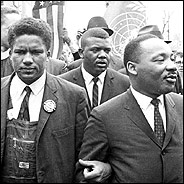Last year Fazila Kabahita and I decided to nominate the Ambidexter Industrial and Normal Institute in Springfield, Illinois, to the National Register of Historic Places as a part of our Historic Preservation course. Fazila and I learned that the Ambidexter Institute was modeled after Booker T. Washington’s Tuskegee Institute. Deemed the “Tuskegee of the North,” Ambidexter was a private industrial school intended to teach trades and provide academic education to African American students. It received the name “Ambidexter” because its founder, Springfield clergyman G.H. McDaniel, believed that the students would have to be ‘ambidextrous,’ (in some sense-suggesting that they would have to be doubly as skilled as whites) using both their minds and their might, in order to make it in competition for employment with the white labor force. McDaniel intended to “accomplish for the negroes of the north what Booker T. Washington’s great school is doing for the colored people of the south.” He opened the school in 1901 with funding from prominent Springfield residents.[1] As we continue to work toward nominating the site through the Illinois Historic Preservation Agency, I thought I’d share a little about the history of the school and similar institutions that followed the Tuskegee model.
Continue reading “Ambidexterity and Ambition: The Tuskegee Model Legacy”







